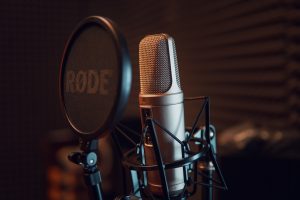Voice Acting: How To Sound Good Working From Home During Covid-19

Are you affected by COVID-19? If yes, don’t worry. In this article, we highlight how voice-over artists take working from home up a notch by creating a soundproof environment, complete with technical equipment through 3 essential voice acting tools.
How are Voice Acting gigs affected?
Before I continue, let me summarize that COVID-19 has impacted the number of gigs over the period of lock-down. Jobs were irregular and sometimes three or four a month, other times none at all.
The pay for voice-over work varies from a couple of hundred dollars to more than a thousand per project. Having said this, over the past few months, you will notice that it is improving now.
Why do we need to start voice-over working from home?
Because of the pandemic, voice-over work cannot be done in a professional recording studio and artists have to do it from their homes.
In a professional studio, the artist focuses on delivery while taking direction from the client and producer. When they record from home, they have to wear all the hats, including those of sound engineer and editor.
Then there are the technical equipment and recording environment.
To record at home, one would need a microphone, a computer with audio recording and editing software, and an audio interface, hardware which connects the microphone to the computer.
There should also be some form of soundproofing.
How do we do soundproofing at home on a budget?

1. For those on budget:
This can be a makeshift affair using pillows and blankets placed around the microphone. Yes, it works. Not elegant but it works.
This can be further improved by putting up acoustic foam boards to isolate the area around the microphone, which is a cheaper option than acoustically treating the entire room.
Treated rooms typically have wall-to-wall foam which absorbs sound, making for better recorded audio.
2. For those with $8,000 to $10,000 budget:
This is the budget needed for setting up an acoustically treated room. While it is not fully soundproof, this can be further improve by including a vocal booth which you add another $2,000 budget. This vocal booth will allow you to deliver quality recordings.
For some of those staying in high-rise apartment, typically they can consider converting their small bomb shelter into a vocal booth. Below is a great video to show how you can also use your house closet for this purpose.
Three Essential Tools For A Voice Acting Studio At Home
To set up a voice-over studio at home, you need three essentials: a good microphone, an audio interface which connects the microphone to your computer, and the right software.
Once you have all three essentials, pick the quietest part of your home to set up your studio or to do the recording. It could be a room, the storeroom or just the farthest point from the window.
Essential Tool One: Microphone
The Audio-Technica AT2020 Cardioid Condenser microphone and the Blue Microphones Ember Xlr Studio Condenser Microphone are wired options that have good build quality and great sound quality. They are also in a similar price range of $120 to $140.
Essential Tool Two: Audio Interface
This is hardware that gets the audio from your microphone to your computer. Audio recorded through the interface is of higher quality and allows for more inputs such as professional-level microphones.
An affordable option is the Rode AI-1 at around $200.
It has a solid build quality, phantom power for microphones that need it and two simple knobs to adjust the microphone volume and speaker or headphone volume.
Essential Tool Three: Software
If you are using a Mac, you already own the cheapest audio software option. GarageBand is a digital audio workstation software by Apple that can be downloaded and used for free.
The cheapest Apple computer is the MacBook Air which starts at $1,449.
For both PC and Mac users, there is Adobe Audition, another powerful audio software that can record and edit multi-track clips. It sits within Adobe’s Creative Cloud suite of applications and services which users can subscribe to.
There is a seven-day free trial, after which you can pay for a monthly subscription at $41.43, or a year’s subscription at $27.62 a month.
See Our Latest Voice Acting Reviews And Buyer’s Guides
- Best Voice Over Preamp
- Best Desktop Microphone Stand
- Best Condenser Microphones
- Best Closed-Back Circumoral Headphones

